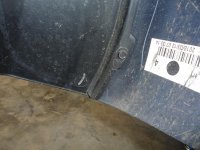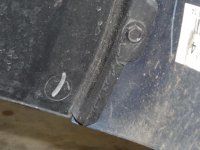I know that there is absolutely no damage to the tire. The fenders are a little flexible, but I honestly think that the wear on the fender came from my "Testing the Envelope" and maybe running low air pressure while trying to determine what was correct.
Oddly enough, it's often running
HIGHER tire pressures that makes tires &/or sidewalls rub on fenders etc a bit higher up in the wheel well. :shocked:
Not only will higher pressures (marginally) maximise the size of your tire (just like blowing a balloon up - more air = bigger balloon!

) but when you're running lower pressures, the tread sticks to the road at the contact patch and as you drive & turn the
sidewalls tend to flex and twist/deform most
very near where the contact patch leaves the ground, rather than extending that twist/deformation up into the wheel well where it could rub on the fenders. Increase the tire pressure and that deformation tends to take in
more of the tire carcass (because there's actually
less flex in the sidewalls to absorb the torque!) so that as the tread lifts off the ground while you turn, the more rigid carcass skews a little and that twist extends further up the tire/wheel into the wheel well and fender area, where it can rub!! :lecturef_smilie:
Just look at some pics/vids of drag car tires (generally run at quite low pressures to enable the greatest traction!) torquing up & growing taller as the revs increase, but for the first few moments you should be able to see how the whole tire carcass 'bags' and grows fatter
in front of the contact patch (well clear of the fenders & wheel well) then once the tread leaves the ground
after the contact patch, those ripples very rapidly decrease as the sidewalls throw out & the rolling circumference of the tire grows markedly - all the 'fat' bits, twist, and flex etc occurs pretty low down near the contact patch and usually well clear of the fenders & wheel well! It's generally only when you start
increasing your tire pressures that the increased rigidity in the 'balloon' that is the tire's carcass will allow that twist/deformation to extend far enough up from the contact patch for anything to touch the fender or wheel well!!

All that said, when I first fitted 175/60R15's to the front of my RT, I noticed that the heads of the hex head screws holding the fender together & in my case, protruding further into the wheel well than anything else, would just touch the tire during hard cornering. I swapped out those hex head screws that had heads protruding about 10mm for pan head screws that only protruded about 3mm & dropped my tire pressures another 2 psi (down to 14/16psi) - problem solvered!

hyea: :thumbup:



